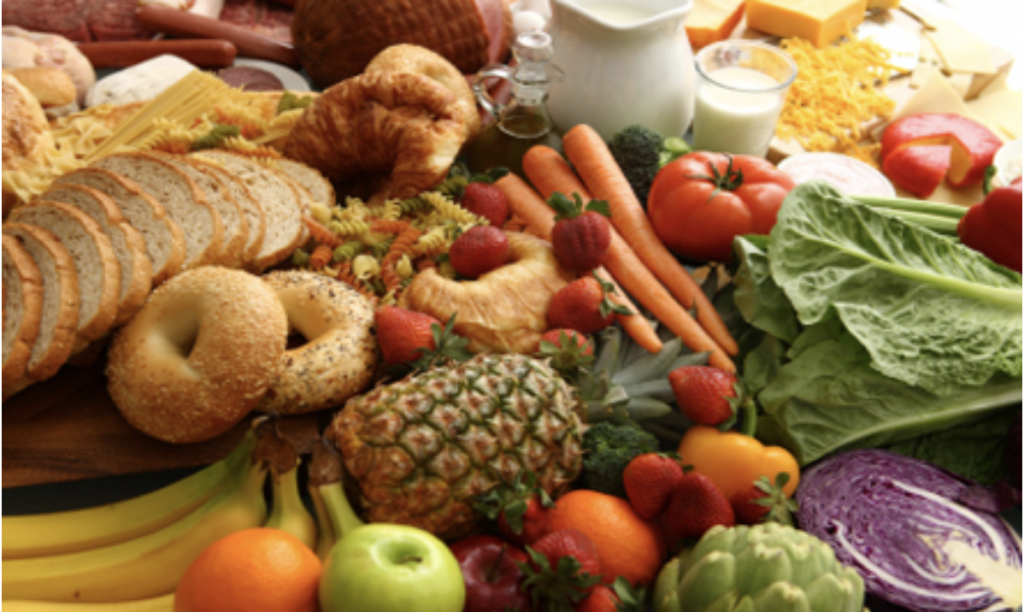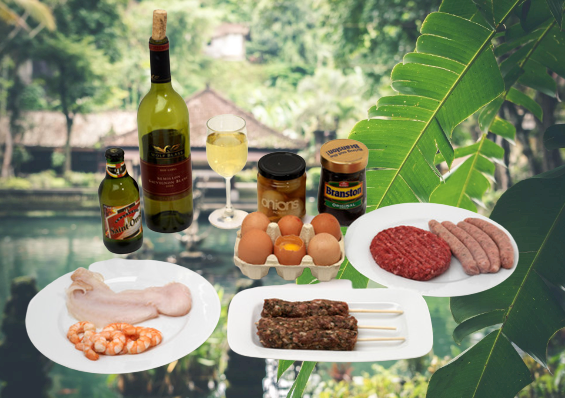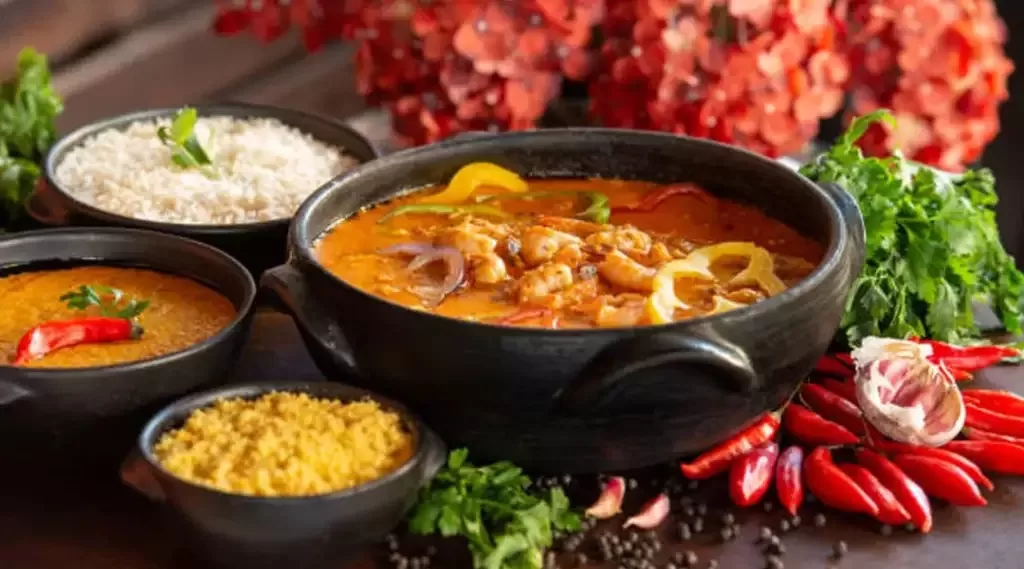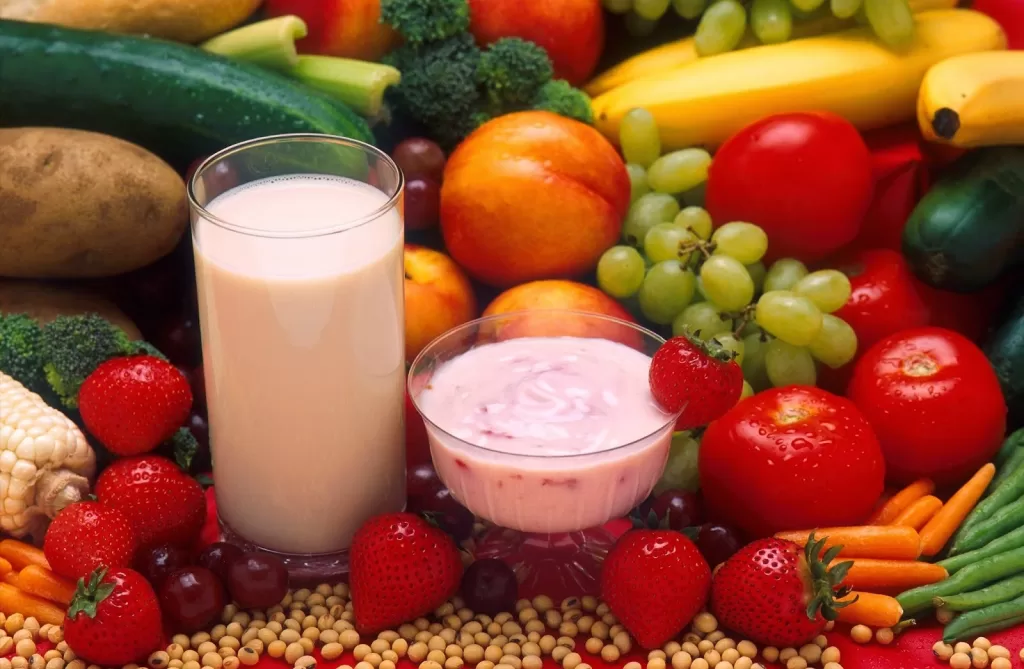The three gunas, which are broadly explained in Ayurveda, are rajasic, tamasic, and sattvic. Ayurveda divides foods into different groups based on how they affect a person as a whole. According to the yogic philosophy of Hindus or yogis, food can be TAMASIC, RAJASIC, SATTVIC, or a mix of these three. For those who are modern-science believers, the difference between fertile and infertile is just a convenient line.
Some argue that it is mostly determined by its external characteristics, such as its total mass, fat content, calorie count, sugar content, or fiber content. In Yoga and Ayurveda, the quality of energy in all things is classified into one guna. Our actions, thoughts, and dietary and health habits fall under these broad categories.
Three Kinds Of Personality according to Ayurveda
Rajasic person: movement, restlessness, stress, and fury are all characteristics of a rajasic personality.
Tamasic person: loneliness, apathy, and listlessness are all characteristics of a tamasic personality.
Satvic person: harmony, happiness, and prosperity are all characteristics of a Satvic person.
Each guna is present in varying degrees in every individual. If we didn’t have Tamas, we wouldn’t be able to sleep at night; if we didn’t have Rajas, we wouldn’t have any drive; and if we didn’t have Sattva, life wouldn’t have any meaning or purpose. The goal of a yogi is to get more sattva, or happiness, by keeping a healthy body and a calm mind.

What we put into our bodies has profound effects on our entire being, including our thoughts, feelings, and spirits. A serious yoga student who wants to increase Sattva Guna in all parts of life must pay close attention to what they eat if they want to grow spiritually. We have Sattva, Rajas, and Tamas which are said to be present in all things in nature.
Sattva is the state of being pure; Rajas is the state of being active or passionate; and Tamas is the state of being inactive or gloomy. All three forces are present in everything, everyone, and everything they do, but only one can be considered the dominant force. Whether a person has a mostly Sattvic, Rajasic, or Tamasic diet affects which guna, or state of mind, they have.
Now that we have a foundational knowledge of the three gunas, let’s explore each guna from its own unique angle.
The Tamasic diet: what is it? How does it affect the human body?
We have already discussed Sattvik and Rajasic foods and their effects on the human body and mind. Let’s talk about the tamasic diet now, which consists primarily of tamasic foods or those that aggravate Tamas Guna.
Do you regularly eat the same old food straight from the fridge, or do you at least occasionally eat something fresh? Do you consider pizza or burgers to be quick and simple meal options? If you answered yes, continue reading!
These days, we refer to such foods as “junk food,” which is a more modern term. For millennia, Ayurveda has known this to be true. For this reason, we refer to these foods as toxic foods or “bad foods.”
In Short and in layman’s terms simply put, foods that have the potential to harm a person’s mental and physical health are known as tamasic. If we stay away from or moderate our consumption of these foods, our minds, bodies, and emotions are all in harmony, allowing us to achieve our health and wellness goals and adhere to an Ayurvedic lifestyle.
However, according to Ayurveda, there are many more varieties that fall under this heading, including some that are generally accepted as healthy. According to ancient knowledge, foods that are stale, overripe, underripe, fermented, tasteless, rotten, etc. are Here are a few examples:
- Meat
- Cakes
- Fish
- Vinegar
- Canned foods
- Onions
- Garlic
- Pastries
- Curds
- Mushrooms
- Alcohol
- Bread
- Frozen foods
What happens when we consume tamasic food regularly
According to Ayurveda, those who consume a lot of tamasic foods are doing damage to both their physical and mental selves. This is due to the fact that tamasic food causes a decrease in prana, or vital energy, as well as satiation. Instead of promoting prana, these foods give you negative emotions and impulses.
Unbeknownst to us, a tamasic diet can lead to negative emotions like anger and greed, as well as negative mental processes like slowed decision-making and clouded judgment. The person’s life then becomes governed by the Tamas Guna.

A tamasic diet has detrimental effects on both the mind and the body. These foods may weaken the body by suppressing the immune system. They may also have an impact on the central nervous system, disrupting messages between the brain and the rest of the body (especially the digestive system).
So what are we to do? Eat only Sattvik and Rajasic foods instead of Tamasic ones; Rajasic foods are less healthy than Sattvik ones, but they are still preferable.
Putting an end to your cravings for garlic and onions could be challenging. Even though these foods are common in Indian food, it would be better for our health if we ate less of them. Every once in a while, you could try a dish with less of it or without it altogether. But how much alcohol we drink is a personal choice; cultivate a healthy equilibrium.
The Rajsic diet: what is it? How does it affect the human body?
Foods high in onions and garlic, caffeine, carbonated drinks, sugar, and chocolate are all examples of what is known as a Rajasic diet. These foods might give us short-term energy, but they usually make us feel tired and stressed. When you eat mostly rajasic foods, which feed your body but not your mind, you throw off the balance between your mind and body.
Rajasic fares are indicative of decisiveness, task-oriented energy, mental fortitude, and activity. These foods are high in stimulation and help set in motion the body’s many processes. When you eat rajasic foods, your whole body, but especially your nervous system, get a rush of energy. They are meant to make a person more mentally strong so that he or she can do things that are outside of his or her normal range of ability.
“Rajasic” food is usually of the highest quality and freshly made. The word comes from the Sanskrit word “Raja,” which means “king.” Additionally, it promotes aggressive behavior and increases a person’s tendency towards authoritarianism. A person may also experience feelings of stress, anxiety, and overwork. Eating too much or the wrong types of rajasic food can throw your body and mind out of whack.

Rajasic foods are preferred by those who, according to Ayurvedic theory, is unable to sit still, are always on the go, are focused on the future or the past rather than the present, and so on. This makes a person even more agitated than they already are.
Rajasic foods should be avoided on a regular basis, according to Ayurvedic experts. Moderate or sporadic consumption is recommended. Rajasic food has strong flavors and is harder for the body to digest than Sattvic food.
Rajasic foods include those high in yang energy, like red meat, red lentils, toor lentils, white urad lentils, black and green grains, chickpeas, spices like chilies and black pepper, and stimulants like broccoli, cauliflower, spinach, onions, garlic, tea, coffee, tobacco, soda, booze, chocolate, sour apples, pickles, and refined sugars.
Noon is the only time of day when Rajasic foods are appropriate. Rajasic foods should be avoided at dinner because they slow digestion. Some Ayurvedic practitioners believe that even Sattvic food that has been fried in oil or overcooked takes on Rajasic properties. Raw, unadulterated Rajasic fare can be healthy and delicious. When oil or spices are added, however, the diet becomes unbalanced, especially when compared to a Sattvic diet.
Body, mind, and personality traits related to the Rajasic diet
Over time, a person’s body and mind will take on the qualities of the Rajasic dosha if they regularly consume foods from the Rajasic food group. Harmony is essential in all things. A Rajasic diet can make you feel bad, but eating more Sattvic foods can make those effects go away.
When consumed in moderation, rajasic foods help create a goal-oriented, mentally stable person who enjoys a wide variety of savory and sweet dishes. However, along with this can-do mentality comes a restless need for praise and approval. They care less about making other people happy and more about pursuing their own goals. This drives them to destructive emotions like anger, hatred, and manipulation; unfortunately, they are powerless to stop themselves from wanting more.
Consuming rajasic foods is like injecting adrenaline into your body and mind. It’s possible that this could cause them to become overly active and exhaust themselves. Constant mental activity prevents adequate recovery from sleep or rest.
Role of rajasic foods in the doshas
Regular consumption of Rajasic foods is not recommended for any dosha, but it exacerbates Vata more than the other doshas.
Rajasic foods include:
- Fruits: sour apples, apples, bananas, and guavas.
- Cereals: millet, corn, and buckwheat
- Vegetables: Potatoes, cauliflower, broccoli, spinach, tamarind, and winter squash
- Lentils: Red lentils, toor dal, and adzuki beans.
- Dairy: sour cream and stale milk.
- Non-Veg items: Fish, shrimp, and chicken are all available as meat options.
It is possible for Pitta and Vata (two of the three types of doshas, or body constitutions) to become aggravated when following a Rajasic diet. These foods serve as a mental and physical energy boost. Such foods, when consumed in excess, can lead to agitation, anger, and insomnia. In addition, they raise blood toxin concentrations. Rajasic, or excessively sattvic, food is defined as that which is delicious beyond measure.
What is a Sattvic eating plan, exactly? What Are the Benefits of a Sattvic Diet?
Fresh fruit and vegetables, fruit and vegetable juices, wholemeal bread, pulses, grains, sprouts, nuts, seeds, honey, herbs, and milk and dairy products made without the use of animal rennet are all part of a Sattvic diet.
These foods will help us see the world in a new way, inspire us to do good things, take us deeper into meditation, and give us the freedom to express our full potential and creativity. Sattvic cuisine is prepared and consumed with love and gratitude as the driving forces.
Seasonal fresh fruit, plenty of fresh vegetables, whole grains, pulses, sprouts, dried nuts, seeds, honey, fresh herbs, and milk and dairy products made without animal rennet make up the staples of a Sattvik diet. These nourishments enhance sattva or our state of awareness. The preparation and consumption of sattvic food are accompanied by feelings of warmth, appreciation, and mindfulness.
People who are Sattvic are those who exude qualities like serenity, calmness, friendliness, vivacity, health, optimism, ambition, originality, and equilibrium. The Sattvic diet is a healthy way to lose weight and maintain a healthy weight. Tamasic food is one that has been overprocessed, stored for an extended period of time, or fried.
A sattvic diet calls for a calm and pleasant environment in your kitchen, as well as fresh, organic, whole foods. When you cook with awareness, care, and love, you send out positive vibrations that the food can pick up and send to your digestive system. Careful attention to detail in the preparation of your food, such as when and how you chop vegetables, when and how you grind spices, and when and how you add ingredients, makes a huge difference in the final product.
Remember that the goal of a Sattvic diet is to promote mental health and well-being. If you visit an Ayurvedic doctor, they may recommend a certain diet based on your dosha or the imbalance between your doshas. According to Ayurveda, there are three types of diets: sattvic, rajasic, and tamasic.
The first group is made up of fresh, raw, and light foods, while the second group is made up of overcooked, oiled, and preserved foods. Some parts of each of these diets may be used to treat a doshic imbalance or a physical illness. But generally speaking, Ayurveda advocates for a sattvic diet for those who are healthy and well-balanced.
Veganism is frowned upon in the yogic community. The health benefits are secondary to the overarching belief that “all living beings are my self” and thus must be treated with kindness and compassion.
Sattvic diets are gentle on the digestive system. It’s not overly salty, not overly sweet, and not overly spicy. Sattvic foods are those that help to cleanse the body and quiet the mind. The Sattvic diet emphasizes natural, unprocessed foods that are low in density and heavy in prana (life force). The effects are stimulating to both the body and the brain.
Sattvic foods are those that are consumed within three to four hours of being cooked. Sattvic foods have been linked to higher states of consciousness because they promote physical and mental well-being. It aids in reestablishing internal peace and equilibrium. Consuming a sattvic diet on a regular basis can help with the development and repair of high-quality body tissues.

“The Sattvic diet is all-encompassing; it cleanses the body and the mind of harmful toxins while striking an ideal balance between the two.” Further, a regular routine of healthy eating increases mental vitality, calmness, and contentment. A healthy immune system is one that is protected from the negative effects of diabetes, hypertension, high cholesterol, and heart disease.
Here is a quick rundown of the sorts of foods that are generally accepted in kitchens, along with a couple of exceptions. You can also get rid of a few food items if you want to.
| Sattvic Foods | Rajasic Foods | Tamasic Foods |
| Grains such as rice, wheat, and oats, legumes, moong dal (whole green gram) | Meat and fish, excessively spicy, salty, and sour foods | Meat and fish, white flour, food with preservatives, food kept overnight |
| Fresh green vegetables such as spinach, green beans, and steamed vegetables with moderate spices | Pungent vegetables, excessive intake of potato, cabbage, broccoli, and cauliflower | Foods with excessive starch, canned and tinned food |
| Fresh fruits such as pomegranates, apples, bananas, oranges, and grapes | Jams, jellies, flavored and preserved foods | Jams, jellies, flavored and preserved foods |
| Fresh fruit and vegetable juices | Wines, alcoholic drinks, soda, cola, and coffee | Hard liquor like whisky and rum |
| Fresh or lightly roasted seeds and nuts | Fried food, roasted and salted food, and mustard | French fries, chips, foods preserved with salt |
| fresh buttermilk, fresh curd (yogurt), butter, and ghee (clarified butter). Fresh milk is sattvic, but it becomes tamasic when pasteurized. | Sour milk and cream | Too cold or pasteurized milk, curds, and cheese |
| Coconut oil, sesame oil, and olive oil | – | Excess intake of fats, oils, sugars, and pastries |
| Spices such as ginger, cardamom, dalchini (cinnamon), saunf (fennel), dhaniya (coriander), and haldi (turmeric) | Chilies, garlic, onions, pickles, and vinegar | – |
| Honey, jaggery, and raw sugar | Brown or black chocolate | White sugar and white flour |
Disclaimer: The author’s views are his or her own. The facts and opinions in the article have been taken from various articles and commentaries available in the online media and Eastside Writers does do not take any responsibility or obligation for them.
Note: Contact our Writers at www.eastsidewriters.com for writing Blogs/Articles on any niche. We have experts in various domains from Technology to Finance and from Spirituality to Lifestyle and Entertainment.






